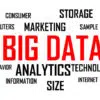Although there is been a lot of talk about Blockchain technology Cryptocurrencies and Bitcoin; very few people actually understand how these things work. To make sense out of all this, people also want to know; How Cryptocurrencies are regulated? How users of Cryptocurrencies remain anonymous? And how secure is Bitcoin? According to Price Waterhouse Coopers USA, Bitcoin is the most popular cryptocurrency, a medium of exchange transacted on the digital platform using encryption techniques capable of controlling the monetary unit‘s creation and verifying transactions. Blockchain, on the other hand, is the technology that makes it possible to trade in cryptocurrencies. Broadly speaking, Blockchain is a centralized ledger, where transactions involving pier-to-pier network are executed.
Using this sophisticated technology, users can confirm a transaction without referring to a central repository or clearing authority. Blockchain technology can also help settle trades, transfer funds, and vote among other possibilities. This is how the technology works: an individual begins by requesting a transaction. The request is broadcast to a P2P network; a type of network constituting several nodes or computers. The request and the status of the user are then validated by the nodes using a proffered algorithm. Besides cryptocurrency transactions, a verified transaction can also involve records and wide-ranging contracts. Once the transaction is verified, it is combined with other oncoming transactions to create a new data block for the ledger to process. The block is added to the existing blockchain in a permanent setup that cannot be configured before the transaction is completed.
On the whole, the benefits of using blockchain cryptocurrencies are numerous. They include accurate currency and transaction tracking, increased transparency, cost reduction, and use of a permanent, verifiable ledger. There are, however, several unknowns that users have to contend with, such as competing platforms, challenges involved in implementing the transactions, and regulatory implications. An increasing number of users are also concerned with the complexity of technology. When discussing cryptocurrencies, it is also important to reiterate that the currency does not have an intrinsic value or physical form. The inability to redeem the cryptocurrency into another commodity such as Silver means it has no intrinsic value while the non-physical nature of the currency means it only exists in the network. Cryptocurrency supply is also not regulated by a central bank.
As pointed out earlier, cryptocurrencies have numerous potential applications. For this reason, it could disrupt several sectors. According to Investinblockchain website, numerous blockchain solutions exist that target housing, healthcare and financial services and others. In the real estate sector, property rental blockchain solutions like Atlant and Rentberry can help property owners connect with tenants and eliminate the need to use brokers or incur exorbitant fees. The platform also makes it possible for landlords and potential tenants to screen each other to establish one’s suitability. Other benefits include establishing financial terms, promoting sound decision making, and offering payments, thanks to the smart contract auto-enforcing features. With Beetoken, another popular blockchain solution you can establish a PSP network of guests and hosts just like Airbnb.
The healthcare sector is a huge industry in America contributing close to $4 trillion or 1/5 of the entire national economy. However, the industry suffers from numerous challenges, including outdated infrastructure and inefficient legacy data management systems. Since the patient’s data remain a crucial component of the healthcare system, it is important to secure its access and storage. Health care sector players can partner with blockchain service providers to create a perfect co-working ecosystem that can improve service delivery. A solution like Patientory makes it possible for users, including healthcare providers, organizations, and patients to store and manage crucial information. With this technology, healthcare organizations enjoy affordable and secure data storage. Patients, on the other hand, can access their medical history and hand it over to providers they choose.
Due to its transformative nature and multiplier effect, Blockchain technology is nowadays talked about on the same lines as the Internet of Things (IoT) and Artificial Intelligence (AI). When we talk about smart technology, where devices like smartphones can digitally speak to the vehicle or fridge, we theoretically have to brace for potential transactional challenges and security issues. The other challenge is the ability to seamlessly process huge amounts of data. Blockchain technology can be used to provide answers to these common questions. Using no central system, technology can process huge stacks of information in a secure, encrypted format. A blockchain IoT project such as Hurify gives developers a chance to hone their skills and apply for open IoT development opportunities. Clients can also use the platform to scout for the right talent at competitive rates.
On the trading floor, the process of forecasting, buying, and selling stocks is often tedious, costly, and fraught with lots of uncertainty. An online stock trading tool such as tZERO is specially designed to increase transparency on the trading floor. The other powerful trading tool is called the Augur. This blockchain tool is not only ideal to predict the market, it also questions the outcome of an upcoming event along with the decision to buy or sell shares. The energy sector can also benefit from the technology by letting participants use smart contracts to buy and sell energy. Since middlemen are often a huge impediment to growth and efficiency, blockchain technology also makes it easier for people to create microgrids that will help their community stay resilient in the face of consistent outages. Some of the most popular energy solutions that use blockchain technology include Grid+ and Power Ledger, which allow users to trade electricity and exchange money in real-time.
This is a guest contribution by Adrian Rubin, a tech expert and Creative designer. He has written many articles about IoT and Blockchain technology and its applications. Adrian Rubin’s input in design circles has seen his agency expand its market share and stay innovative at all times.














